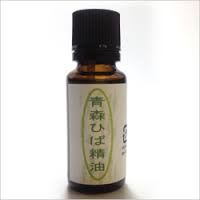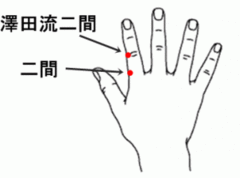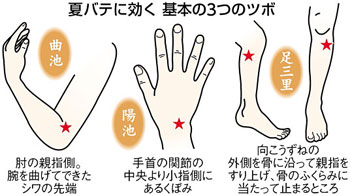カテゴリ
月別 アーカイブ
- 2023年8月 (1)
- 2023年5月 (5)
- 2023年4月 (19)
- 2023年3月 (8)
- 2023年1月 (3)
- 2022年6月 (1)
- 2022年2月 (2)
- 2022年1月 (1)
- 2019年10月 (1)
- 2019年9月 (2)
- 2019年8月 (1)
- 2019年7月 (1)
- 2018年1月 (1)
- 2016年12月 (1)
- 2016年8月 (3)
- 2016年7月 (1)
- 2016年3月 (5)
- 2016年2月 (2)
- 2016年1月 (4)
- 2015年12月 (3)
- 2015年11月 (2)
- 2015年10月 (2)
- 2015年9月 (2)
- 2015年8月 (4)
- 2015年7月 (3)
- 2015年6月 (2)
- 2015年5月 (4)
- 2015年4月 (13)
- 2015年3月 (5)
- 2015年2月 (1)
- 2015年1月 (6)
- 2014年12月 (3)
- 2014年11月 (4)
- 2014年10月 (9)
- 2014年9月 (4)
- 2014年8月 (13)
- 2014年7月 (1)
- 2014年6月 (3)
- 2014年5月 (4)
- 2014年4月 (4)
- 2014年3月 (11)
- 2014年2月 (3)
- 2014年1月 (7)
- 2013年12月 (16)
- 2013年11月 (8)
- 2013年10月 (5)
- 2013年9月 (4)
- 2013年8月 (4)
- 2013年7月 (13)
- 2013年6月 (14)
- 2013年5月 (24)
- 2013年4月 (37)
最近のエントリー
- ・鍼灸(はりきゅう)
- ・その他の手技による治療
- ・整体 カイロプラクティック オステオパシー など
- ・アスレチックリハビリテーション
- ・アロマオイルセラピー アロマオイルトリートメント
- ・リンパドレナージュ
- ・タクティールケア/タッチセラピー
- ・炭酸ミスト
- ・物理療法
- ・トレーニング指導/アドバイス
- ・ダイエット指導/アドバイス
- ・気になる料金。。。
HOME > インフォメーション > アーカイブ > 「治療以外の雑感」「最近の出来事」の最近のブログ記事
インフォメーション 「治療以外の雑感」「最近の出来事」の最近のブログ記事
青森県産 ヒバオイル

今日は青森県産のヒバオイルを使ってみました。
入口のドアを開けた瞬間、ヒバ独特の香りがただよっています。
コンクリートでおおわれているうちの治療院とは
ちょっとおもむきが異なりますが、木の香りが好きな方にはたまらないのではないですか?
ヒバオイルには「ヒノキチオール」という成分が入っています。
(余談ですが、国産の檜(ヒノキ)にはあまり入っていないそうです。)
リラックス・ストレス緩和・癒し
不眠症・冷え性・生理不順・肌の保湿・肌の抗菌・水虫
といった体のメンテナンスに用いる事や
防虫(虫除け)・防菌・消臭・脱臭・防カビ
園芸用の害虫対策
といった身の回りに用いる事もできます。
ヒバの香りを嗅ぐと、森林浴をしているような感じがします。
サイプレス、クローブ、セージ、バジル、ローレル
ローズウッド、レモン、ラべンダー
などと相性がいいそうなので、少しずつ試してみますね。
ただ、ヒバは好き嫌いがありますので、
苦手な方はおっしゃってください。
ミントやユーカリなど、夏向きの香りもご用意しています。
(松江はりきゅう治療院)
2013年7月25日 11:08





ゲリラ豪雨にご注意を
(松江はりきゅう治療院)
2013年7月23日 15:26





タバコの害について
「三次喫煙はDNAを傷付ける! タバコを消した後でもニコチンなどの有害物質は堆積し、毒素を発し続ける」
もしそれらの表面が衣類やカーペットであった場合、子供たちへの脅威は特に深刻。
いくら本人が換気に気を使っていても、通常のクリーニングでは排除出来ない。
カーペットを取り替えたり、壁を塗り替えさない限り、有害物質は変わらず存在し続ける。
(松江はりきゅう治療院)
2013年7月 3日 20:11





ピアノ演奏における椅子の座り方
そもそも、バッハの曲をピアノで演奏するという事自体、当時は奇想天外の事だったようです。
CDを手にしてみるとこのような注意書きが、、、
このような映像がありますので、是非。
低いイスに座り続ける事は、腰椎の椎間板ヘルニアを引き起こす可能性があります。
真似をしないようにしてください。
(松江はりきゅう治療院)
2013年7月 3日 11:58





夏は冷房で冷えます。冷え性の方に限らず、夏場こそお灸をしましょう!
夏場こそお灸はおすすめです。
(松江はりきゅう治療院)
2013年6月27日 13:10





よもぎの効果
という質問を受けます。
よもぎです。
よもぎには次のような効果があります。
アトピーや切り傷の改善
【飲む/食べる】
・発ガン抑制因子を増加させる
・血中コレステロールを低下させる
・腸内洗浄効果 → 体内の毒素をデトックス
【香り】
しかも、天然のよもぎから作られたもぐさは、香りも良く、お灸の煙を吸うと脳内の血液循環が良くなるという話も。
それがもぐさのアロマ効果なんです。
夏は皆さんが思っている以上に体が冷えています。
和のアロマテラピー お灸をして、体のメンテナンスをしましょう。
皮膚にもぐさを直接乗せることに抵抗がある方は
箱灸
竹筒灸
隔物灸(ひらたく言うと、せんねん灸)
もありますのでご安心を。
ホットパックや超短波でお腹を温める事もできますのでご相談下さい。
(松江はりきゅう治療院)
2013年6月19日 19:07





バランスボールの間違った使い方
・体幹部(コア)のトレーニング
・オフィスの椅子(イス)に使って骨盤周りをトレーニング
・ストレッチやマニアックな筋トレをする際の補助具
として用いるべきバランスボール(別名スイスボール)。
本来の使い方にはない、間違ったふざけた使い方をするのは絶対にやめましょう。
下記の動画はその典型例です。
完全に間違った使い方をしています
 。
。立つ事でバランス感覚を養うとかいうレベルの問題ではないです。
下手すれば硬膜内血腫や脊髄損傷になりますよ。
(松江はりきゅう治療院)
2013年6月13日 11:41





ものもらい(麦粒腫)について
菌が付着している、いわゆる汚い手で目の周りをこすった場合、
当然ながら、ものもらい(麦粒腫)になる可能性は高くなります。
かゆいので結膜炎になる可能性も高くなります。
手をきちんと洗っていても、落とし穴があります。
それは家庭内にある、タオルです。
こまめに洗っていますか?
何人もの人が手をふいたタオルで手をふいたり、または顔をふいたりしていませんか?
自分しか使っていなくても、いつまでも同じタオルを使っていませんか?
洗濯物がすぐかさばるからと、ついバスタオルを何度も使っていませんか?
タオルが原因でものもらいになっている可能性は結構高いですよ。
ものもらいに効くツボ があります。

澤田流二間というツボです。
ここを自分でぐいぐい揉む。爪楊枝で強く当てて刺激する。
するとやがて目やにが大量に出て治る事があります。
また、この二間というツボは子供の便秘や、かんの虫にも効きますので
ご活用ください。
(松江はりきゅう治療院)
2013年5月26日 09:54





食中毒が多くなる季節
当院でも手洗い所と入り口に手指消毒液を設置しておきます。
手洗いしてもきちんと洗わないと、図のような所に菌が付着したままなのだと
覚えておくといいですよ。
(松江はりきゅう治療院)
2013年5月26日 09:34





ハイケンスのセレナーデ
私、いわゆる「鉄男」です。
治療院のBGM にはこだわっていると書きました。
オルゴールのメロディーも流しています。
ですが、さすがに次のような曲は流せないですね。。。
http://www27.tok2.com/home2/eastmelody/kyaku.mp3
「ハイケンスのセレナーデ」が曲名だそうです。
ローカル線に乗る旅が私の趣味です。
時々、鉄道に関する記事も書いていきます。お付き合い下さい。
(松江はりきゅう治療院)
2013年5月26日 09:15





<<前のページへ|1|2|3|4|5|6|7|8|次のページへ>>




















